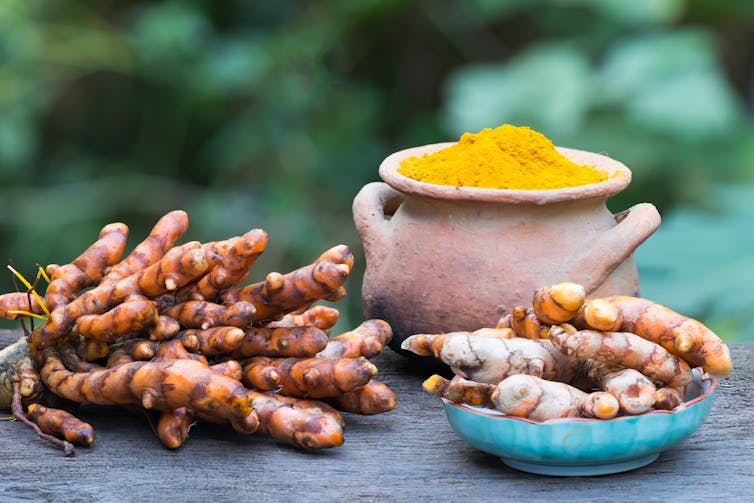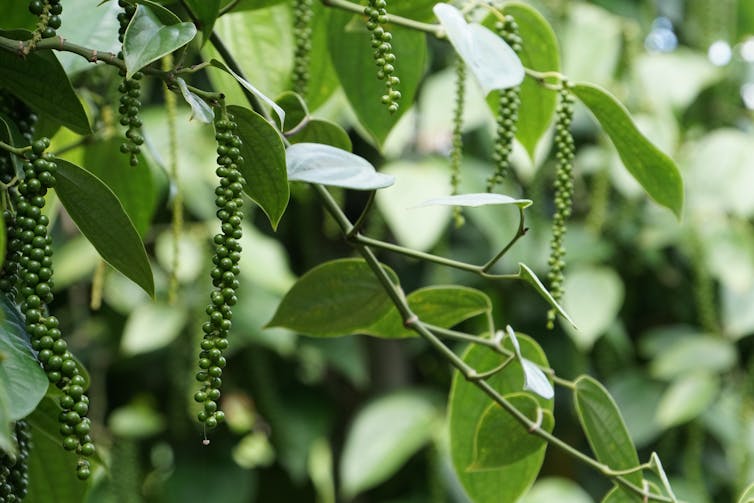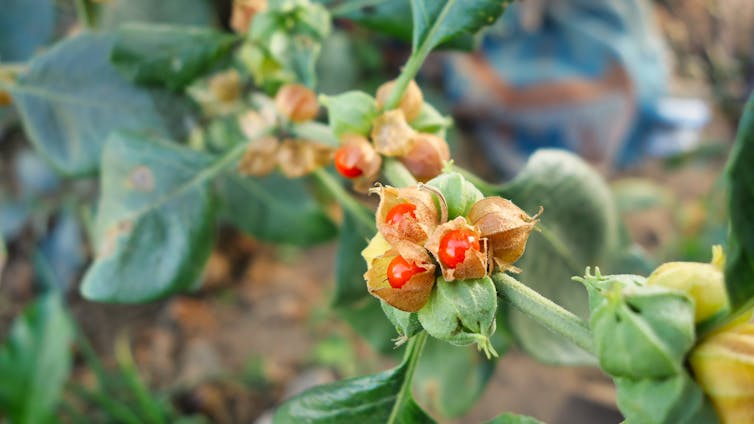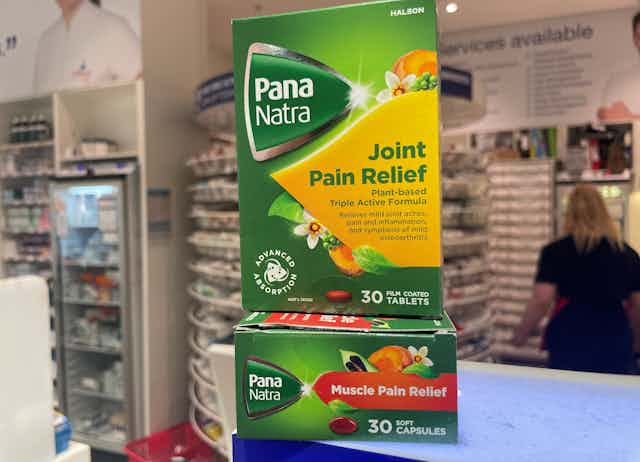In an era where chronic pain affects millions worldwide, the search for effective and safe pain relief has never been greater.
PanaNatra is a line of herbal products from Haleon, the makers of Panadol. Haleon claims the three PanaNatra’s products, made from plant extracts, help manage and provide relief from mild joint aches, mild muscle pain, and mild pain affecting sleep.
They contain different combinations of four plants:
- Boswellia serrata (contained in the joint and muscle products)
- Curcuma longa (in the joint and muscle products)
- Piper nigrum (just in the joint product)
- Withania somnifera (just in the sleep product).
These products are “listed medicines” in Australia. This means the ingredients are considered broadly low risk, have been used in traditional medicine, and are manufactured to a high standard. But the manufacturer has not provided evidence to the government regulator that they work.
So can herbal ingredients effectively and safely relieve different types of pain?
What does the evidence say?
Let’s consider the evidence for the four main ingredients.
Boswellia serrata
Indian Frankincense (Boswellia serrata) has been described in traditional Indian Ayurveda texts since the 1st century AD. Key active compounds derived from the gum resin of the tree called boswellic acids are thought to have anti-inflammatory effects.

The Boswellia serrata dry concentrate extract (Rhuleave K) used in the Muscle Pain product contains 50 mg of the herb per tablet, whereas the Joint Pain product includes 33.3 mg as a different formulation (Apresflex).
A review of various human clinical trials using a range of formulations of this herb supports its ability to reduce some types of pain and improve function in osteoarthritis. But a key finding of the study was that improvement only begins when Boswellia serrata is used continuously for four weeks and at a dose of at least 100–250 mg per day.
In a clinical trial, 100 mg daily of a Boswellia serrata gum-based product was found to reduce pain and improve physical functions for people with osteoarthritis.
Read more: 9 signs you have inflammation in your body. Could an anti-inflammatory diet help?
Curcuma longa
Turmeric (Curcuma longa) has been used in Chinese and Indian medicine for at least 2,000 years. It contains a well-known chemical called curcumin, a natural compound used for its anti-inflammatory properties, especially for osteoarthritis.

Turmeric compounds such as curcumin are often combined with Boswellia serrata compounds to improve their anti-inflammatory effects to reduce pain.
A review of 16 different clinical trials found turmeric extracts were effective for knee osteoarthritis.
A similar conclusion was drawn from a review of 11 clinical trials which examined the use of curcuminoids (of which curcumin is one) for one to four months. It found curcuminoids had similar pain-relieving qualities as non-steroidal anti-inflammatory based drugs.
Piper nigrum
Black pepper (Piper nigrum) contains the chemical piperine, which has anti-inflammatory properties.

Piper nigrum is often added to curcumin products to improve the absorption of curcumin, as is the case with the PanaNatra Joint Pain product.
For musculoskeletal pain, a preliminary human trial that examined the effects of a 1,000 mg daily dose of Rhuleave K (the extract used in PanaNatra) found it was as effective as paracetamol.
But the study was not placebo-controlled and the dose of paracetamol given (1,000 mg per day) was below the recommended daily intake for pain relief.
Read more: Knee pain: here’s why it happens and how you can fix it
Withania somnifera
Withania somnifera (also called Ashwagandha) has been used in traditional Indian Ayurvedic medicine for thousands of years to reduce stress and ease inflammation.

One of the key chemicals appears to be withaferin A which interferes with the inflammatory signalling pathway.
PanaNatra’s Pain and Sleep product contains 300 mg per tablet of a Withania somnifera extract called KSM66.
A human trial found a daily 600 mg dose of Withania somnifera extract improved sleep quality and helped in managing insomnia.
In a separate trial, Withania somnifera was found to improve sleep quality, again when administered at a dose of 600 mg per day.
Read more: From Ayurveda to biomedicine: understanding the human body
So what does this mean?
Whether, and how well, a herbal medicine works is largely dependent on the formulation (how it’s made and the extract used) and the dose provided. The same herb used in one formulation may result in a different outcome than a different formulation containing the same herb.
It’s also important to note that effectiveness for one type of pain does not mean a product will work for other types of pain.
Overall, similar herb extracts to those that have been included in the PanaNatra products do have some evidence that they work for pain and sleep. Whether they work for you will depend on a number of factors including the effectiveness of the PanaNatra formulation, how much you take, and the extent of your pain.
Are they safe?
PanaNatra needs to be used carefully by some patients.
Overall, there is insufficient human data to recommend any of these herbal ingredients in pregnancy or lactation. In fact there is some evidence that Withania somnifera may be unsafe to use in pregnancy, and other than the amounts commonly found in food, turmeric and its compounds are not considered safe to use in pregnancy either.
The herbs may also impact the effectiveness and safety of other medicines. For example, the blood levels of the cancer drug tamoxifen may be reduced when taken concurrently with turmeric supplements.
Withania somnifera has been associated with drowsiness and cases of liver toxicity.
Curcuma longa products, including formulations containing curcumin and piperine, have also been associated with liver toxicity. As such, Australia’s Therapeutic Goods Administration has proposed adding warning labels to any products that contain those ingredients. But this discussion is ongoing and a decision won’t be made until next year.
Bottom line
While there is a long history of traditional use of the herbs in the PanaNatra products, there is limited high-quality scientific evidence for the effectiveness and safety for these specific products.
Pregnant and breastfeeding women should not take these products, and you should not exceed the daily dose recommended by the manufacturer.
If you have an underlying health condition, or are taking other medication, before you try them, consult your doctor or pharmacist to check if these products are suitable for you.
Read more: Do you know what's in the herbal medicine you're taking?

